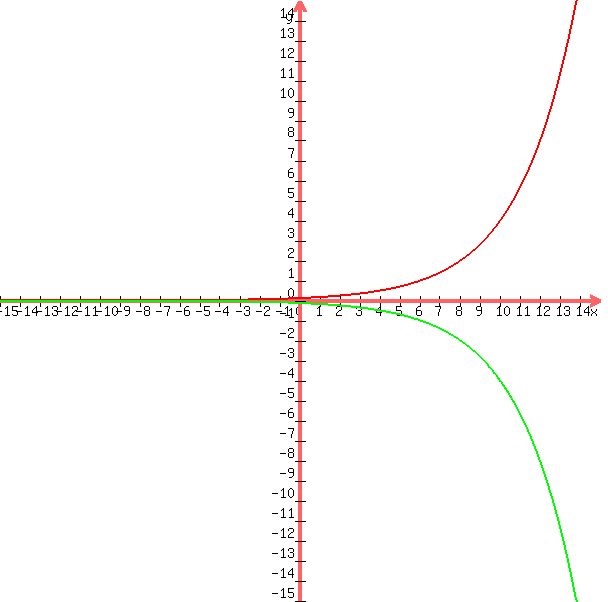Question 557237: find the inverse: y=6+log(base 2)^x
Found 2 solutions by stanbon, Theo:
Answer by stanbon(75887)   (Show Source): (Show Source):
You can put this solution on YOUR website! find the inverse:
y=6+log(base 2)^x
----
1st: Interchange x and y:
x = 6 + log2(sqrt(y))
---
2nd: solve for "y":
log2(sqrt(y)) = x-6
-----
sqrt(y) = 2^(x-6)
---
y = 2^(2x-12)
---
y = 2^(2x)/2^12
=====================
Cheers,
Stan H.
================
Answer by Theo(13342)   (Show Source): (Show Source):
You can put this solution on YOUR website! your equation is:
y = 6 + log(2,x^2)
subtract 6 from both sides of the equation to get:
log(2,x^2) = (y-6)
this equation is true if and only if:
2^(y-6) = x^2
replace x with y and y with x to get:
2^(x-6) = y^2
take the square root of both sides of this equation to get:
y = +/- sqrt(2^(x-6)
your 2 equations that should be inverses of each other are:
y = 6 + log(2,x^2)
y = +/- sqrt(2^(x-6)
graph of the first equation looks like this:

graph of the second equation looks like this:

graph of these 2 equations superimposed on each other along with the graph of the equation y = x looks like this:

they are inverse equation if the point (x,y) in one equation equals the point (y,x) in the second equation.
we'll choose the value of x in the first equation to be equal to 6
when x = 6, the value of the first equation of:
y = 6 + log(2,x^2) becomes:
y = 6 + log(2,6^2) which becomes:
y = 6 + log(2,36) which becomes:
y = 11.169925001
the solution for the first equation is (x,y) = 6,11.169925001)
to see if the second equation is truly an inverse of the first equation, we solve the second equation for x equal to the value of y which means that:
x = 11.169925001.
when x = 5.169925001, the second equation of:
y = +/- sqrt(2^(x-6) becomes:
y = +/- sqrt(2^(5.169925001-6) which becomes:
y = +/- sqrt(2^(-.8300749986) which becomes:
y = +/- 6
when x = -6 in the first equation of:
y = 6 + log(2,x^2) becomes:
y = 6 + log(2,36) which, once again, give you a value of:
y = 11.169925001.
we get the following:
when x = 6 in the first equation, y = 11.169925001.
when y = 11.169925001 in the second equation, y = 6
we get f(x,y) = f(y,x)
when x = -6 in the first equation, y = 11.169925001.
when y = 11.169925001 in the second equation, y = -6
we get f(x,y)( = f(y,x)
note that the inverse equation is not a function because there are more than one value of y for each value of x.
the original equation is a function, but the inverse equation is a relation.
|
|
|